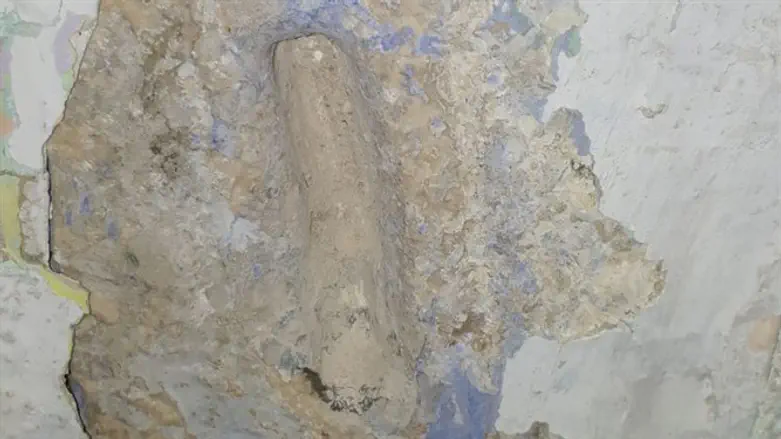
During preservation work, layers of plaster were removed at the site of an ancient synagogue in the village of Shiloah (Silwan), right outside Jerusalem's Old City. The removal exposed where mezuzot used to be at the entrance of the building.
The ancient synagogue was built by the Yemenite immigrants in 1885. The community was evacuated from their homes by the British, who claimed that there was a lack of manpower and means to protect the citizens there.
"The symbolic place of the mezuzah found in the ancient synagogue in the Yemenite village is another proof of the importance of the project we have initiated to reconstruct this place," said Minister of Jerusalem and Heritage Zeev Elkin said.

"This is one of the most important assets in the history of the immigration of Yemenite Jews to Jerusalem and the Land of Israel. I think that in our return to these places we are doing a historic justice. We will return to the Yemenite village, also known as Shiloah and where there was a mezuzah, there will be a mezuzah again and a large crown will arrive," Elkin promised.
The architect of the Council for the Preservation of Historical Site, Moshe Shapira, said that the Yemenite synagogue was the only remnant of the Ezra neighborhood built by Israel Dov Frumkin and destroyed by the Jordanian Legion. Frumkin was the grandfather of former Shin Bet Chief Carmi Gillon.
The mezuzah compartments were discovered by Asaf Baruchi and the Tsanani family who lived in the compound when the plaster was removed from the sides of the buildings.

"It is interesting to note that the depressions were discovered in accordance with the Ashkenazic and Yemenite customs. This sheds additional light on this neighborhood which began with Ashkenazi construction for the Yemenites and later included independent Yemenite construction.
The preservation work was initiated by Ateret Kohanim with the assistance of the Ministry of Culture and the Ministry of Jerusalem through the Council for the Preservation of Sites.